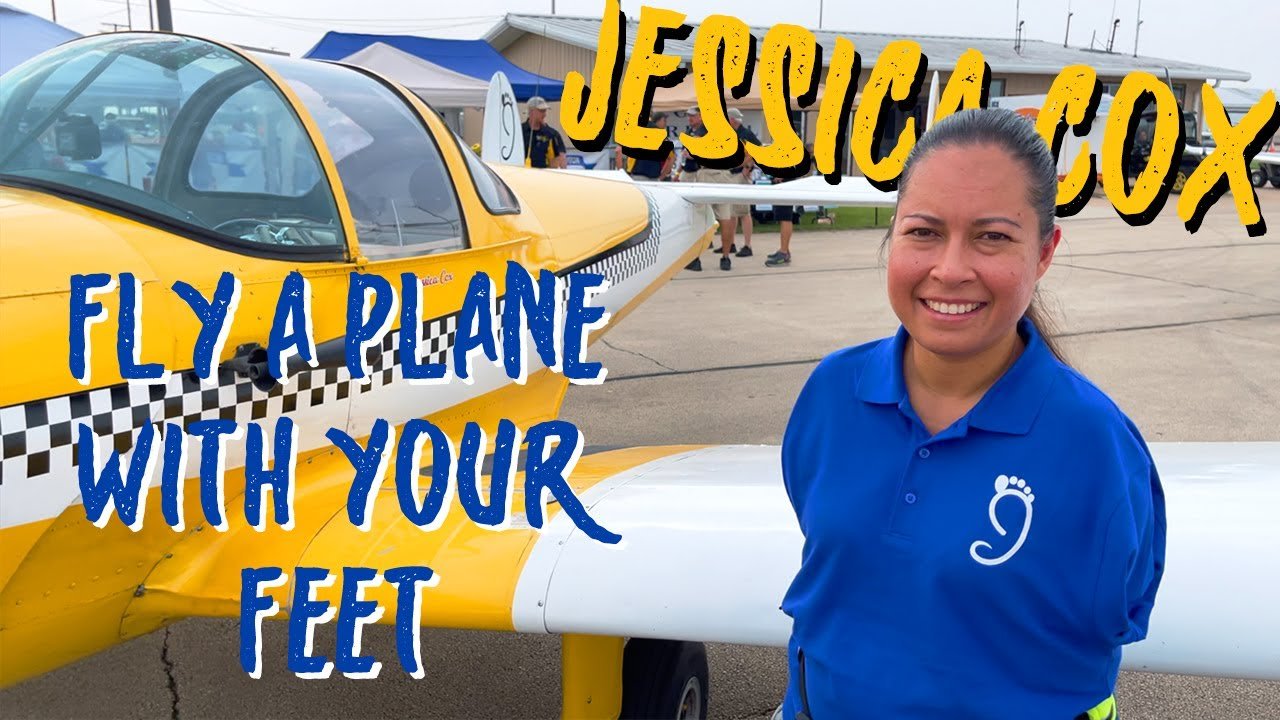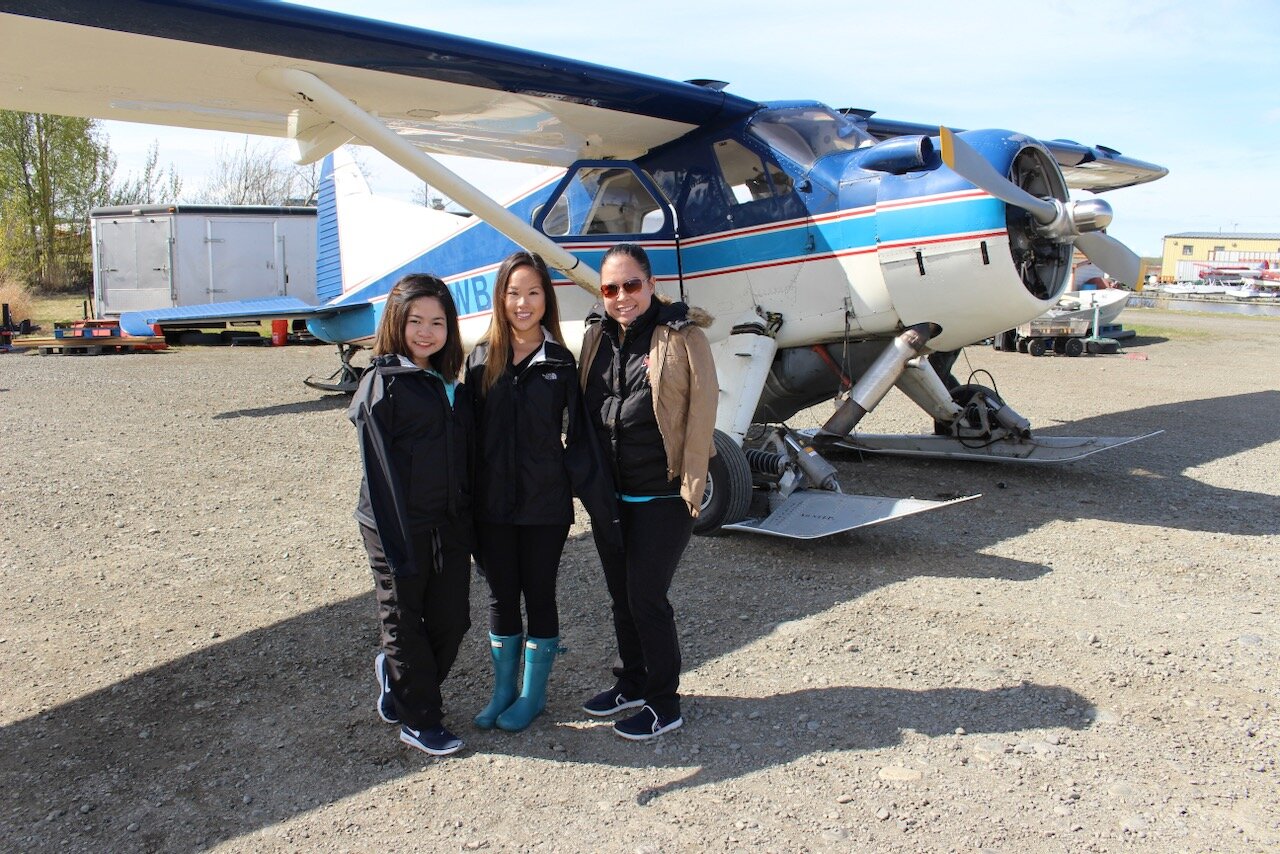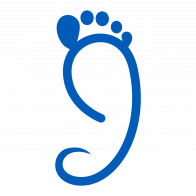About the Project
The first exclusively foot-controlled airplane in aviation history

Unforgettable undeniable change
After a decade of flying, Jessica Cox is known worldwide as the first licensed armless pilot in history. Finding a video of her flying an Ercoupe is easy; millions of people have watched the various features or news stories. However, only a few people have seen her fly in person. The reason isn’t just logistics. Flying an Ercoupe with just your feet is hard. Really hard.
Jessica’s reputation as a pilot opens doors around the world. This year Jessica has the opportunity to dial down the difficulty of flying by building a custom-controlled airplane. An airplane like this has never been built before, which is poetically fitting for a pilot like her.
If successful, this custom airplane could serve as a model for other pilots with disabilities to explore or inspire new ideas. Jessica’s reach will expand from 50 miles around her home airport to virtually anywhere in North America. Most importantly, this pilot and airplane duo will be an undeniable reminder that “disability does not mean inability.”
Latest updates
-

Build Blog
Get the latest update on the build.
Design, construction, prototyping, testing, and certification will all be covered here.
-

News of the Build
Check out the latest coverage on The Impossible Airplane
Where the build is going
Why an experimental airplane?
Certified airplanes like the Ercoupe must meet strict requirements and cannot be significantly changed without extraordinary time, expense, and red tape. Meanwhile, experimental aircraft enjoy more freedom for what can be modified and changed. Homebuilt kit airplanes have even more freedom. As an experimental, the finished airplane can continue to evolve and adapt to changing needs.
Ask anyone in the homebuilt experimental category of aircraft for the best company in the business and their answer will most likely be Van’s Aircraft. Van’s has been building homebuilt kits since the 1970s. More than 10,000 kits have been sold (as of November 2019). The RV-10 is Van’s only 4 seat aircraft. The combination of long distance capability, payload capacity, wide cockpit, and other characteristics provide the best capability (in our opinion) for modifications and the best match for the mission.
In addition, Van’s has the highest standards for making the process of building a kit airplane relatively easy for even nonpilots. Plans include step-by-step instructions with detailed illustrations. The Van’s community of builders and pilots is active and engaged to help other builders complete their airplanes with advice and guidance. This community group is known unofficially as Van’s Airforce.
Why the RV-10?
Extra support
A team of professional engineers has committed to helping Jessica ensure that any modifications can safely be applied to an RV-10. The inputs will be tested to ensure the modifications maintain safe control of the airplane and remain within Jessica’s physical capabilities.

one experience can make a life long change.
Doesn’t Jessica already have an airplane?
Yes. Jessica currently flies a 1946 ERCO Ercoupe 415-C with tail number N26R. As mentioned at the beginning, though, the Ercoupe is not easy for Jessica to fly. She must hold her legs crisscrossed in the air in an already cramped cockpit to reach the controls. Jessica feels she can only safely maintain that position for thirty to forty-five minutes.
The Ercoupe is also not designed to be an exhibition platform. While 100 MPH sounds fast for a car, the speed is considered slow for airplanes. In the summer of 2020, Jessica wanted to use N26R to celebrate the 30th anniversary of the Americans with Disabilities Act in Washington, DC. A professional ferry pilot took four days to get N26R from Tucson, AZ, to Frederick, MD. Because of weather, headwinds, and mechanical issues, the return journey took 11 days. A quick IFR airplane like an RV-10 could complete a trip in a much shorter time and allow Jessica to visit multiple locations rapidly.
Not to mention, N26R turned 76 years old in 2022. Regular maintenance can keep her flying for several years to come. However, the engine has not been manufactured in decades, and parts are hard to find. Also, while thousands of Ercoupes were manufactured, they were designed to fly for a few decades but not become octogenarians. Spare parts for the airframe and mechanics who understand the Ercoupe’s design are likewise becoming harder to find every year.
The Mission
Jessica has the ability to open doors and lay the groundwork for change.
In 2017, Jessica created Rightfooted Foundation International, a 501(c)(3) registered nonprofit in the United States. Through the work with RFI, Jessica helps shape the lives of children with limb differences.
Quick Stats
61 million adults in the United States live with a disability (26% of the US population).
— https://www.cdc.gov/ncbddd/disabilityandhealth/infographic-disability-impacts-all.html
The US unemployment rate for people with disabilities was 7.3 % in 2019. Unemployment for the non disabled was 3.5% in the same year.
— https://www.bls.gov/opub/ted/2020/unemployment-rate-for-people-with-a-disability-declines-to-7-point-3-percent-in-2019.htm#:~:text=Bureau%20of%20Labor%20Statistics,-The%20Economics%20Daily&text=The%20unemployment%20rate%20for%20people,has%20trended%20down%20since%202011.
1 in 3 US adults with disabilities (18-44 years) do not have a usual healthcare provider.
— https://www.cdc.gov/ncbddd/disabilityandhealth/infographic-disability-impacts-all.html
1 in 5 people around the world will experience a disability in their lifetime according to the WHO. That’s more than 1 billion people.
— https://www.bls.gov/opub/ted/2020/unemployment-rate-for-people-with-a-disability-declines-to-7-point-3-percent-in-2019.htm#:~:text=Bureau%20of%20Labor%20Statistics,-The%20Economics%20Daily&text=The%20unemployment%20rate%20for%20people,has%20trended%20down%20since%202011.
Stigmas continue to create barriers for people with disabilities. The mission with this new airplane will be to accelerate Jessica’s advocacy throughout the USA.
Aviation events across the United States and Canada will provide a venue for Jessica to reach both adults and kids with her message. These events can have as many as 600,000 people attend (AirVenture 2022).
With an RV-10, the possibility exists to take the airplane and the mission beyond the borders of North America.
The Fun part
Jessica also hopes to be able to take kids with disabilities on flights. This once-in-a-lifetime experience could not be replicated in any other way. Hopefully, the flight will influence the kids to reconsider the possibilities for their future, both casually and professionally.
The Build
Expected completion date:
2025
Van’s estimates that a single person can build an RV-10 in approximately 2,000 hours of work. Thanks to support from the aviation community, We have a kit and a team to help assemble it. Members of EAA Chapter 898 in Toms River, New Jersey, are volunteering their time to construct The Impossible Airplane.
A team will be established to continue to refine the design of the custom control scheme, along with testing and eventually building the final product. Universities and outside engineers will be invited to submit designs as well. All designs will be shared publicly to spur discussion and provide a resource for future accessible designs.
Several aspects of the aircraft must be modified. A simulator of The Impossible Airplane is being created from a donated fuselage. All modifications will be tested using this simulator before installation on the final aircraft.
planned features
The RV-10 allows for dual controls, meaning both front seats in the airplane have the controls necessary to fly the aircraft. Only the left seat will be modified for Jessica. The right seat will remain standard, allowing another pilot to fly if needed.
Interconnected rudders and ailerons (like the Ercoupe) will likely be unsuccessful. Significant design elements were used in the Ercoupe to allow interconnected controls to function safely.
The only electric primary control is expected to be the throttle. Roll, yaw, and pitch require unfailing reliability, so fly-by-wire is not considered at this time.
Students from the University of Arizona have contributed a design for modified pitch, roll, yaw, and braking, as well as modified doors and a custom fuel valve system.
Students from the Oregon Institute of Technology designed an automatic door Jessica can open with a safety switch and button combo.
Thanks to Advanced Flight Systems, autopilot will be added to help facilitate long cross-country flights. They will also provide a robust and redundant instrument panel that will meet the standards for IFR flight. This will allow the RV-10 to fly through some clouds and light weather. It will also increase the safety of flying at night.
Lycoming® Engines will provide an IO-540-D4A5 engine with EIS to power the Impossible Airplane. With 260 hp, this engine will propel the airplane to more than 20,000 ft and fly at nearly 200 mph.
Hartzell is providing a composite three-blade prop, prop governor, and exhaust. The general concensious among piltos is that the three blade composite prop offers a quieter experience in flight.
AeroLEDs will provide their newest product, the AeroSun VXi wing tip lights. With carbon fiber housing and low profile LED lights, runways around the world won’t be a challenge for The Impossible Airplane to land at night.
To ensure flying at high altitudes remains safe, Aithre will provide their Turbo2 supplemental oxygen maker system. Supplemental oxygen is required at altitudes above 10,000 feet, and many of The Impossible Airplane’s performance stats are achieved when flying between 12,000 and 15,000 feet.
To round out the interior, Aerosport Products has provided a carbon fiber panel to house the flight instruments and an overhead panel that can house lights, air, and supplemental oxygen systems.
We can’t do this without you!
Your support could mean the difference in completing this “impossible” project. Your donations are eligible for a tax deduction.


